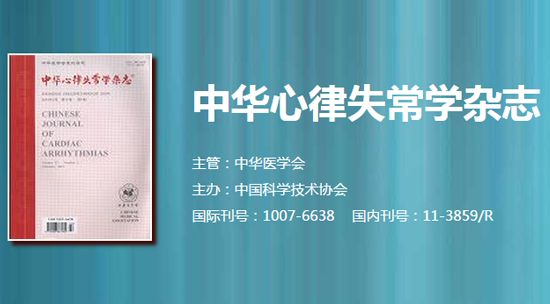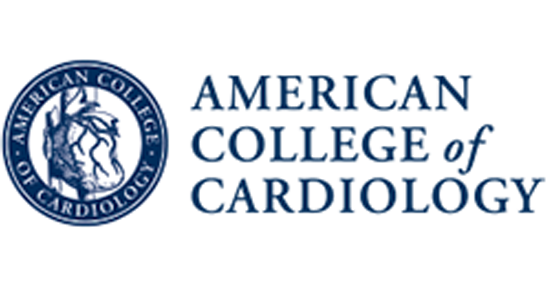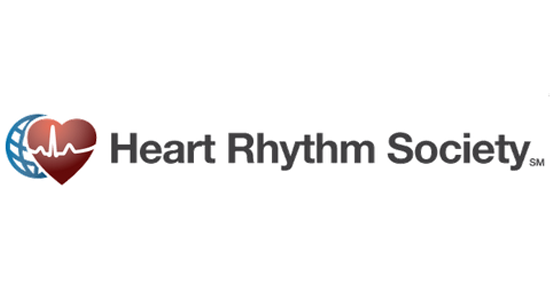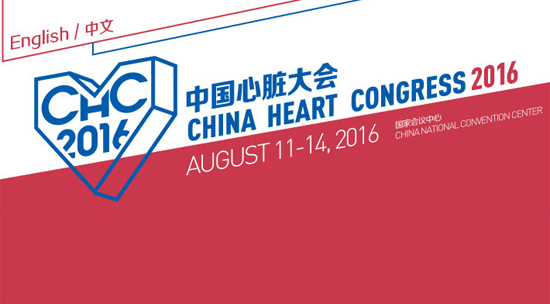Heart Rhythm主编—陈鹏生教授语音速递(五月刊 英文版)
Come and listen to the editor in chief to introduce the most authoritative international heart rhythm research results.
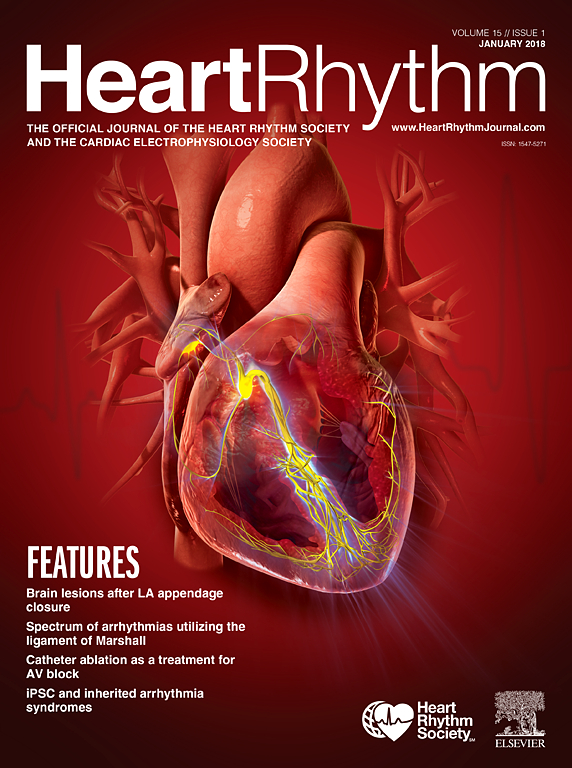
I am Dr Peng-Sheng Chen, the editor-in-chief of Heart Rhythm. Thank you for listening to this podcast.
1
The first article of the May 2018 issue of Heart Rhythm is an obituary for Dr Arthur Moss, written by Dr Wojciech Zareba. Dr Moss died on February 14, 2018 at the age of 86. He was the first in reporting successful closed chest massage during cardiopulmonary resuscitation. He coined the term “echocardiogram”, which is now widely used throughout medicine. He reported the first case of left cervicothoracic ganglion ablation to prevent recurrent syncope in a patient with long QT syndrome. He was the principal investigator of the MADIT series of trials that shaped the practice of ICDs. In addition to his many scientific achievements, Dr Moss was also a loving husband and father to his family, and a mentor to many, many leaders in cardiac electrophysiology. Dr Moss is also a personal friend who has provided me with assistance and guidance over the past many years. He was a member of the Heart Rhythm editorial board since 2004 and has reviewed 86 manuscripts for the journal, with the last review submitted in August 2017. I will miss him dearly.
2
The second article is the letter from Heart Rhythm Society president, Dr George Van Hare and the CEO Mr James Youngblood. They highlight the global growth of the society and encourage the readers to participate in the upcoming scientific session, to be held in Boston in May 2018.
3
The featured article this month is titled “Defibrillation testing is mandatory in patients with subcutaneous-ICD to confirm appropriate VF detection” by Le Polain de Waroux from Belgium. An author interview conducted by our online editor, Dr Daniel Morin can be found on the www.heartrhythmjournal.com website. This is a multicenter study to assess the quality of sensing during induced ventricular fibrillation (VF). The authors studied 137 patients underwent induction of VF at the end of the S-ICD implantation. After VF induction, optimal detection was noted in 29%, undersensing with moderate prolongation of time to therapy in 51%, undersensing with significant prolongation of the time to therapy in 14% while absence of therapy or prolonged time to therapy due to noise oversensing in 6%. The first shock successfully defibrillated VF in 92% of patients. In the remaining 8% of patients, 6% required a second shock and 2% needed an external shock for conversion. These data suggest that in spite of preoperative screening, there is still a need for systematic intraoperative defibrillation testing in patients with S-ICD.
4
The next article is “Catheter ablation of atrial fibrillation in patients with heart failure and preserved ejection fraction” written by Black-Maier et al from Duke University. The authors performed a retrospective study of 230 patients with heart failure who underwent AF ablation, including 42% with HFrEF and 58% with HFpEF. They found that Catheter ablation of AF seems to have similar effectiveness in patients with heart failure, regardless of presence of systolic dysfunction. There were no significant differences in procedural characteristics, arrhythmia-free recurrence, or functional improvements between patients with HFpEF and those with HFrEF. This paper is complimentary to the recently published CASTLE-AF trial, which only included patients with a left ventricular ejection fraction of 35% or less. However, the Black-Maier study was a retrospective analysis. A prospective randomized trial is still needed to determine the benefit of AF ablation in patients with HFpEF. The Black-Maier paper is accompanied by an editorial from Nassir Marrouche, the lead author of the CASTLE-AF trial.
5
Next up is a paper titled “Lack of prognostic value of atrial arrhythmia inducibility and change in inducibility status after catheter ablation of atrial fibrillation” by Santangeli et al from the University of Pennsylvania. The purpose of this study was to evaluate the prognostic role of noninducibility, and of a change in inducibility status after ablation of AF. The authors studied 305 consecutive patients undergoing AF ablation. They found that noninducibility of atrial arrhythmia, or change in inducibility status after PV isolation and non-PV trigger ablation, is not associated with long-term freedom from recurrent arrhythmia. The paper is accompanied by an editorial from Jain and Miller, who pointed out that non-inducibility has not been reliable in predicting the long term success of atrial flutter or even ventricular tachycardia ablations. They propose that hard end points, such as bidirectional block along lines of ablation and elimination of rotors or other substrate, should be used to guide AF ablation.
6
The next paper is titled “Fast nonclinical ventricular tachycardia inducible after ablation in patients with structural heart disease: Definition and clinical implications” by Watanabe et al from Leiden University Medical Centre, Leiden, The Netherlands. The purpose of this study was to propose a patient-specific definition for fast VT based on the individual ventricular refractory period. They studied 191 patients with VT ablation. Among them, 30 remained inducible exclusively for fast VT and 40 were inducible for slower VT. They found that inducibility of exclusively fast VT after ablation is associated with low VT recurrence. Previously the fast VT is often defined by an arbitrary VT rate. This paper takes a personalized medicine approach by defining the fast VT according to the individual ventricular refractory period. This paper is hypothesis generating, and may help promote a personalized medicine approach to the management of potentially dangerous cardiac tachyarrhythmia.
7
Next article is “Perioperative Electrophysiology Study in Tetralogy of Fallot Patients Undergoing Pulmonary Valve Replacement Will Identify Those at High Risk for Subsequent Ventricular Tachycardia”. The paper is written by Sandhu et al from University of Colorado. The study included a prospective cohort of 70 patients with Tetralogy of Fallot undergoing an EP study at the time of pulmonary valve replacement. Among them, 34 had inducible sustained VT and 14 underwent empirical cryoablation. Despite empirical VT cryoablation at the time of pulmonary valve replacement, a high percentage of patients remained inducible for VT after surgery. The authors conclude that in this high-risk cohort, post-pulmonary valve replacement EP study is important to identify patients at risk of VT despite cryoablation. Patients with Tetralogy of Fallot are at risk of developing sustained VT during follow up. While the study showed incomplete success of cryoablation, 55% of patients in this surgical cohort had successful elimination of inducible VT. These findings reserved some room for optimism about ablation therapy in general for Tetralogy of Fallot cases.
8
The next paper is entitled “Accurate localization and catheter ablation of superoparaseptal accessory pathways” by Liu et al from Zhejiang University, in China. The authors identified 11 patients with superoparaseptal accessory pathways in 129 consecutive patients who underwent catheter ablation. The pathways were located in 3 distinct regions: (1) superior to the His bundle recording site at the tricuspid annulus, (2) behind the His bundle recording site, adjacent to the right atrial aspect of the noncoronary aortic cusp and (3) the true para-His bundle region. The electrocardiogram of all 5 manifest APs conformed to the typical "anteroseptal accessory pathway" pattern, including a positive delta wave in leads I, II, avF, and avL; a narrow positive delta wave in lead V1; and a precordial QRS transition at lead V3. All accessory pathways were successfully eliminated by catheter ablation. Catheter ablation of the parahisian accessory pathways may be complicated by AV block. Careful mapping and a detailed understanding of the anatomy of this region as well as distinct electrocardiographic characteristics are essential to eliminate such accessory pathways safely and effectively. None of the patients in this study developed AV block after ablation.
9
Next up is “Permanent His-bundle pacing: Long-term lead performance and clinical outcomes” by Vijayaraman et al, from Geisinger Heart Institute, Pennsylvania. The authors compared the long-term outcomes between permanent His bundle pacing and right ventricular pacing. His bundle pacing was attempted in 94 consecutive patients and was successful in 75. Right ventricular pacing was performed in 98 patients at a different hospital. They found that permanent His bundle pacing was associated with reduction in death or heart failure hospitalization during long-term follow-up compared to right ventricular pacing. However, His bundle pacing was associated with higher rates of lead revisions and generator change. This paper suggests that His bundle pacing can prevent pacing-induced cardiomyopathy. A prospective multicenter clinical trial should be performed to test that hypothesis.
10
The next paper is titled “Thirty-day readmissions after cardiac implantable electronic devices in the United States: Insights from the Nationwide Readmissions Database” by Patel et al, Lehigh Valley Health Network, Pennsylvania. The study cohort consisted of patients who underwent cardiac implantable electronic devices implantation in 2014, identified from the National Readmission Database. Readmission occurred in 12% of the 70,000 cases in the cohort. Female gender, atrial fibrillation/flutter, acute renal failure, coronary artery disease, and device related complications on admission were associated with increased readmission rate. In contrast, device placement on the day of admission, and hospital procedure volume of > 168 per year and privately insured patients were independent predictors of reduced 30-day readmissions. Readmission within 30 days resulted in additional median charges of $30,692 per patient. Some of these factors, such as the timing of surgery and the procedural volume of the hospital may be managed to reduce the chance of readmission. Because Affordable Care Act identified 30-day readmission as a measure for quality of care, these data may be important in guiding quality improvement projects in health care facilities.
11
Next up is a paper titled “Profile of patients with Brugada syndrome presenting with their first documented arrhythmic event: Data from the Survey on Arrhythmic Events in Brugada Syndrome” by Milman et al. from Tel Aviv University, Israel. A survey of 23 centers from 10 Western and 4 Asian countries enabled data collection of 678 patients with Brugada syndrome who exhibited their arrhythmic event. They found that patients with Brugada syndrome with the first arrhythmic event documented after prophylactic ICD implantation exhibited their arrhythmic event at a later age with a higher incidence of positive family history of sudden cardiac death and SCN5A mutations as compared with those presenting with aborted cardiac arrest. They also found that Asians with Brugada syndrome might have a more malignant presentation than Europeans. A major clinical implication of this study is that risk stratification in Brugada syndrome is still difficult, in spite of the available guidelines. Major efforts are still necessary for improving arrhythmic risk stratification in Brugada syndrome.
12
Next paper is “Cardiac rhythm and pacemaking abnormalities in patients affected by endemic pemphigus in Colombia may be the result of deposition of autoantibodies, complement, fibrinogen, and other molecules” by Velez et al from Georgia Dermatopathology Associates, Atlanta. The authors reported 30 patients with endemic pemphigus and 30 controls. They found that the main ECG abnormalities seen in the endemic pemphigus patients were sinus bradycardia, left bundle branch block, left posterior fascicular block, and left anterior fascicular block compared with the controls. Interestingly, one-third of the patients displayed polyclonal autoantibodies against the sinoatrial and/or AV nodes and the His bundle. Deposition of autoantibodies, complement, and other inflammatory molecules is likely the cause of the ECG abnormalities. Autoimmunity can affect both electrical impulse generation and propagation. Further development in this field may provide novel insights and therapeutic approaches to cardiac bradyarrhythmia.
13
Next paper is “Defibrillator shocks and their effect on objective and subjective patient outcomes: Results of the PainFree SST clinical trial”. The study was authored by Sears et al from East Carolina University, in Greenville, North Carolina. The study included 2770 patients. The patients’ average daily activity was 185 min/day. Activity was significantly reduced after an ICD shock and recovered to a normal level after about 90 days. An ICD shock was also associated with reduced quality of life and increased anxiety. Shock anxiety remained significantly elevated at 24 months, regardless of whether the shocks were appropriate or inappropriate. The authors conclude that ICD shocks have a long-lasting adverse effect on both objective, device-measured physical activity and subjective patient-reported outcomes of quality of life and shock anxiety. This study provides strong evidence to support the detrimental effects of both appropriate and inappropriate shocks.
14
The next paper is a basic science study titled “Estradiol up-regulates L-type Ca2+ channels via membrane-bound estrogen receptor / Phosphoinositide-3-kinase / Akt / cAMP response element-binding protein signaling pathway” by Yang et al from Huazhong University of Science and Technology, Wuhan, China. In long QT syndrome type 2, women are more prone than men to the lethal arrhythmia torsades de pointes. The purpose of this study was to investigate the molecular mechanisms whereby 17β-estradiol up-regulates L-type calcium current. The study used a rat model. The results show that estradiol up-regulates Cav1.2α1C and L-type calcium current via plasma membrane estrogen receptor and by activating Pi3K, Akt, and CREB signaling. These results provide new insights into the increased L-type calcium current in female versus males. Interruption of these signaling pathways may reduce risk of ventricular arrhythmias in type 2 long QT syndrome in women.
15
Next up is “Structural and functional remodelling of the atrioventricular node with ageing in rats: the role of Hyperpolarization-activated cyclic-nucleotide gated and Ryanodine 2 channels” by Saeed et al from Manchester Heart Centre, United Kingdom. The aim of this study was to investigate structural and functional remodeling in the AV junction with aging. The study was done in male Wistar Hannover rats, some aged 3 months, and some 2 years old. They found that there was prolongation of the AH interval, Wenckebach cycle length, and AV nodal ERP with aging. Immunofluorescence revealed that with aging, connexin 43, HCN4, Nav1.5, and RyR2 downregulate in the regions of the AV junction and connexin 40, SERCA2a, and Cav1.3 upregulate. Aging results in cellular hypertrophy, loosely packed cells, a decrease in the number of nuclei, and an increase in collagen content. The authors conclude that heterogeneous ion channel expression changes were observed in the AV junction with aging. A new finding is that HCN and RyR2 play an important role in AV node dysfunction with aging.
16
The next paper is titled “Role of apamin-sensitive small conductance calcium-activated potassium currents in long-term cardiac memory in rabbits” by Yin et al from the Krannert Institute of Cardiology, Indiana University. Apamin-sensitive small conductance calcium-activated K current, IKAS, is up-regulated during ventricular pacing and masks short-term cardiac memory. The purpose of this study was to determine the role of IKAS in long-term cardiac memory in rabbits with 3-5 weeks of ventricular pacing using optical mapping techniques. The authors found that chronic ventricular pacing increases Ca2+ transients at late activation sites, which activates IKAS to maintain repolarization reserve. IKAS blockade increases VF vulnerability in chronically paced rabbit ventricles. This study indicates that cardiac memory is a consequence of calcium accumulation at late activation site. Chronic left ventricular calcium accumulation may play a role in the detrimental effects of RV pacing. However, the duration of pacing in this study was not long enough to produce pacing-induced cardiomyopathy to test the latter hypothesis.
17
The next study is titled “Sympathetic nerve blocks promote anti-inflammatory response by activating JAK2-STAT3-mediated signaling cascade in rat myocarditis model: a novel mechanism with clinical implications”. The paper is authored by Park et al, Yonsei University College of Medicine, Seoul, South Korea. The purpose of this study was to evaluate the effect of left stellectomy on cholinergic anti-inflammatory pathway using rat experimental autoimmune myocarditis models. That model was produced by injecting 2 mg of porcine cardiac myosin into the footpads of rats. They found that in the experimental autoimmune myocarditis model, left stellectomy increased survival of the rats while showing antiarrhythmic effects with reduced inflammation via activation of the JAK2-STAT3-mediated signaling cascade. These findings suggest that in addition to reducing the levels of norepinephrine and epinephrine, left stellectomy also activates the cholinergic anti-inflammatory pathway. The anti-inflammatory effects may play a role in the antiarrhythmic effects of left stellectomy.
18
The next article is titled “Communication of genetic information to families with inherited rhythm disorders” by Burns et al from Centenary Institute, Sydney, Australia. Communication of genetic information is complex, and the responsibility to convey this information to the family most often lies with the proband. Current practice falls short, requiring additional support from the clinician and multidisciplinary team. In this review, the authors provide insight into the challenges and provide practical advice for clinicians to support effective family communication. These strategies include acknowledging and managing genetic uncertainty, genetic counseling and informed consent, and consideration of personal and familial barriers to effective communication. Specialized multidisciplinary clinics remain the best equipped to manage patients and families with inherited heart rhythm disorders given the need for a high level of information and support.
In addition to the above articles, this month the Journal also publishes an “Unknown of the month” entitled “Fusion During Entrainment at the Cavotricuspid Isthmus, what is the mechanism”, a Josephson and Wellens ECG lesson titled “Anterior myocardial infarction with high degree AV block in a 62 year old man”, an Image of “High-density mapping of a single-loop biatrial macroreentrant tachycardia” and four EP news articles.
I hope you enjoyed this podcast. For Heart Rhythm, I’m Editor-In-Chief, Dr. Peng-Sheng Chen.
